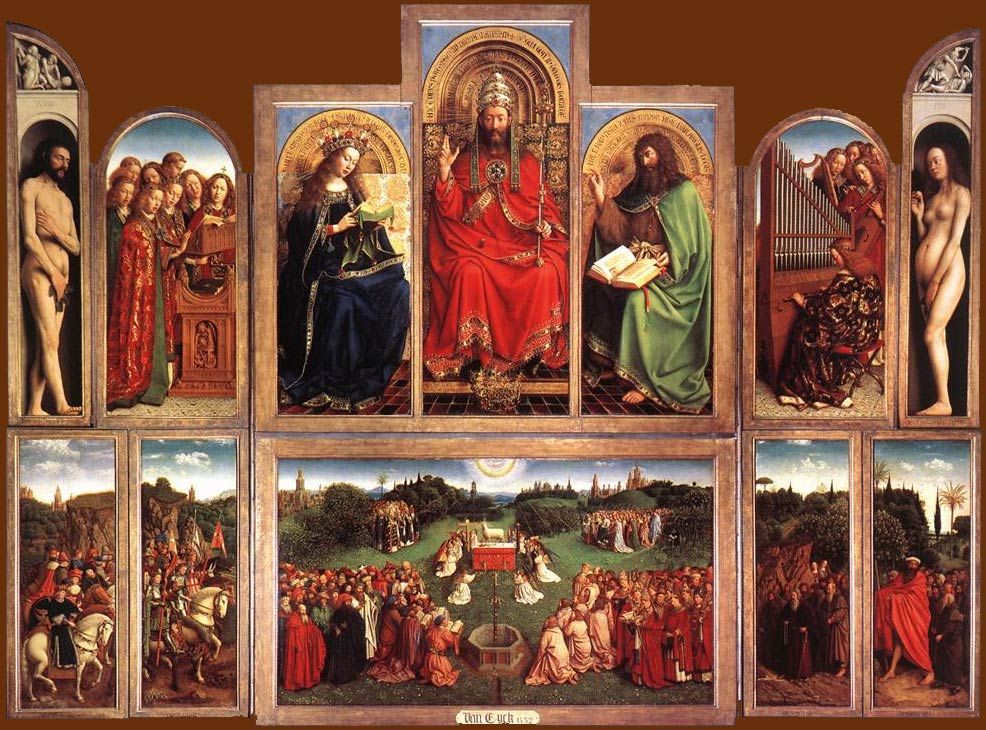Jan and Hubert van Eyck’s famous Adoration of the Mystic Lamb, better known as the Ghent Altarpiece of 1432, ranks among the most significant works of art in Europe. Housed at Saint Bavo Cathedral in Ghent, Belgium, the large and complex altarpiece has suffered a varied history over the centuries, having been dismantled, stolen, damaged, reassembled, recovered, cleaned, and restored several times over. Thank goodness that it is currently in good and safe condition, and open for viewing by the public, at St Bavo’s.
I stumbled across this great work of art on a TV programme just days before I was due to take a weekend break in Brussels. It seemed too serendipitous not to arrange the short side-trip to Ghent, and thus I have been fortunate to view this piece up close and personal.
The van Eyck brothers, and Jan in particular, were significant artists of the Northern Renaissance, operating out of Bruges and leaving to posterity such varied works as the Arnolfini portrait, the illuminated manuscript known as the Turin-Milan Hours, and this great altarpiece in Ghent.
Jan van Eyck, the younger and more famous of the two brothers, was a master of naturalistic detail. He pays as much attention to earthly beauty as he does to the religious themes in the altarpiece. The folds of the clothes, the jewels, the fountain, the flowers and vegetation, the churches and landscape in the background – all reveal a systematic and discriminating study of the natural world.
Compare with the earlier, “flatter” International Gothic art of the 14th century. Although artists like Duccio had just begun to explore depth, perspective, and space, van Eyck takes it to a whole new level and we recognise, for the first time, an unquestionable realism in the finished artwork.
